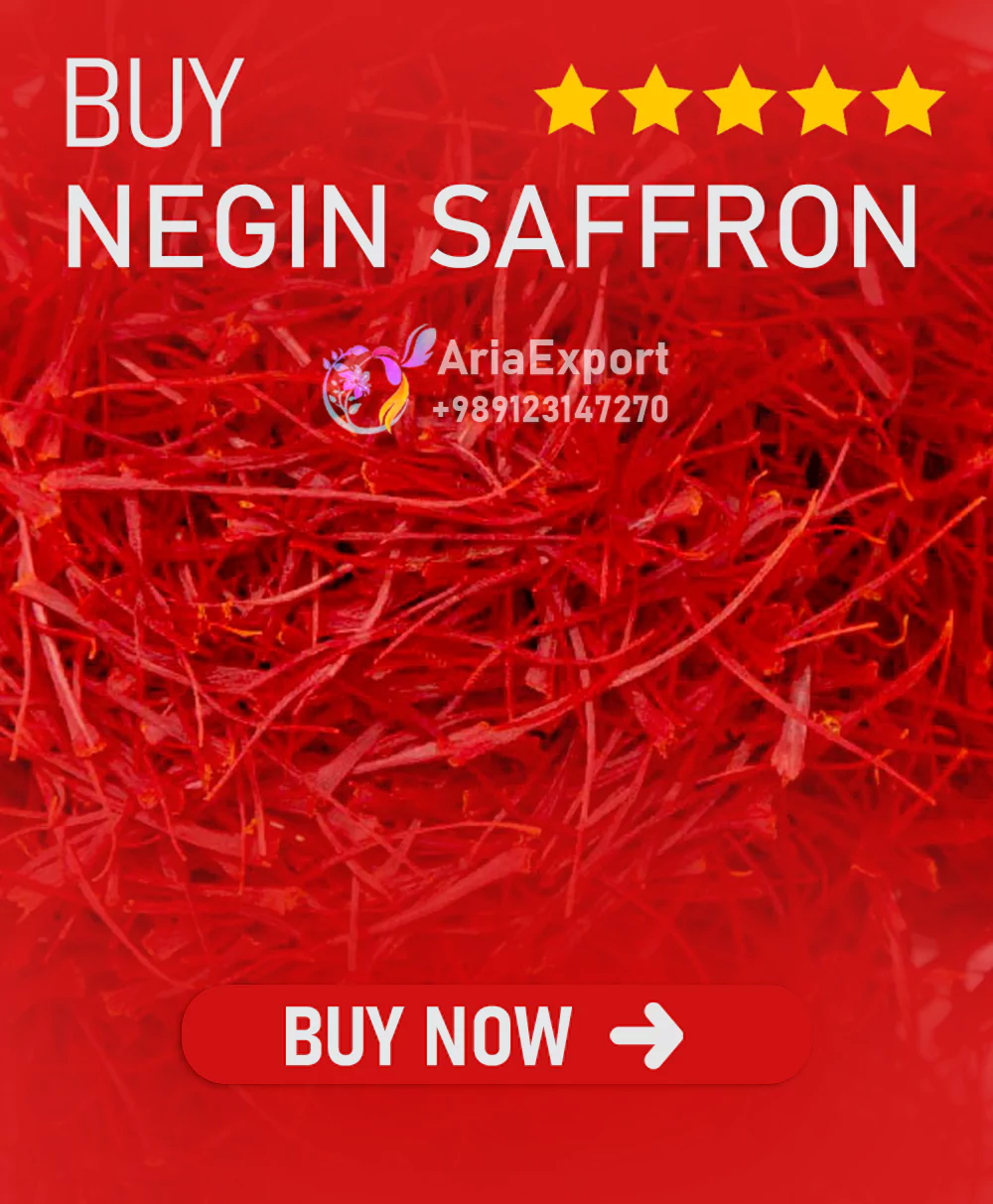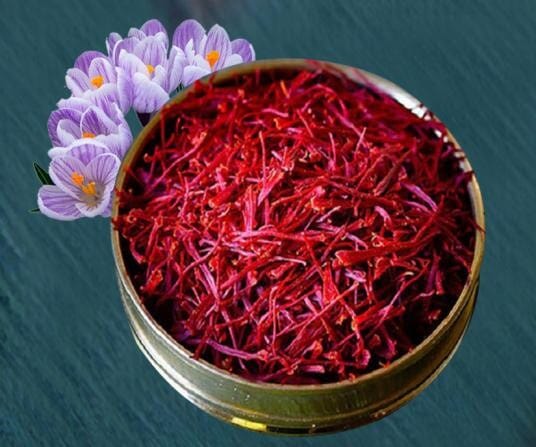
Negin Saffron is the highest quality and most premium type of Iranian saffron, derived from the red stigmas at the end of the saffron flower. Known globally for its exceptional aroma, strong coloring power, and beautiful appearance, it stands out among other saffron varieties. Saffron comes in various types, Negin saffron is one of the best, and this article explores it in more detail.
What is Negin Saffron?
Known as Iran’s "red gold" saffron is a versatile spice primarily grown in Iran, mainly in Razavi Khorasan Province, in cities like Qaenat, Kashmar, Torbat Heydarieh, and Bajestan but cherished worldwide as a popular seasoning. Saffron comes in various types, each with unique characteristics and specific uses.
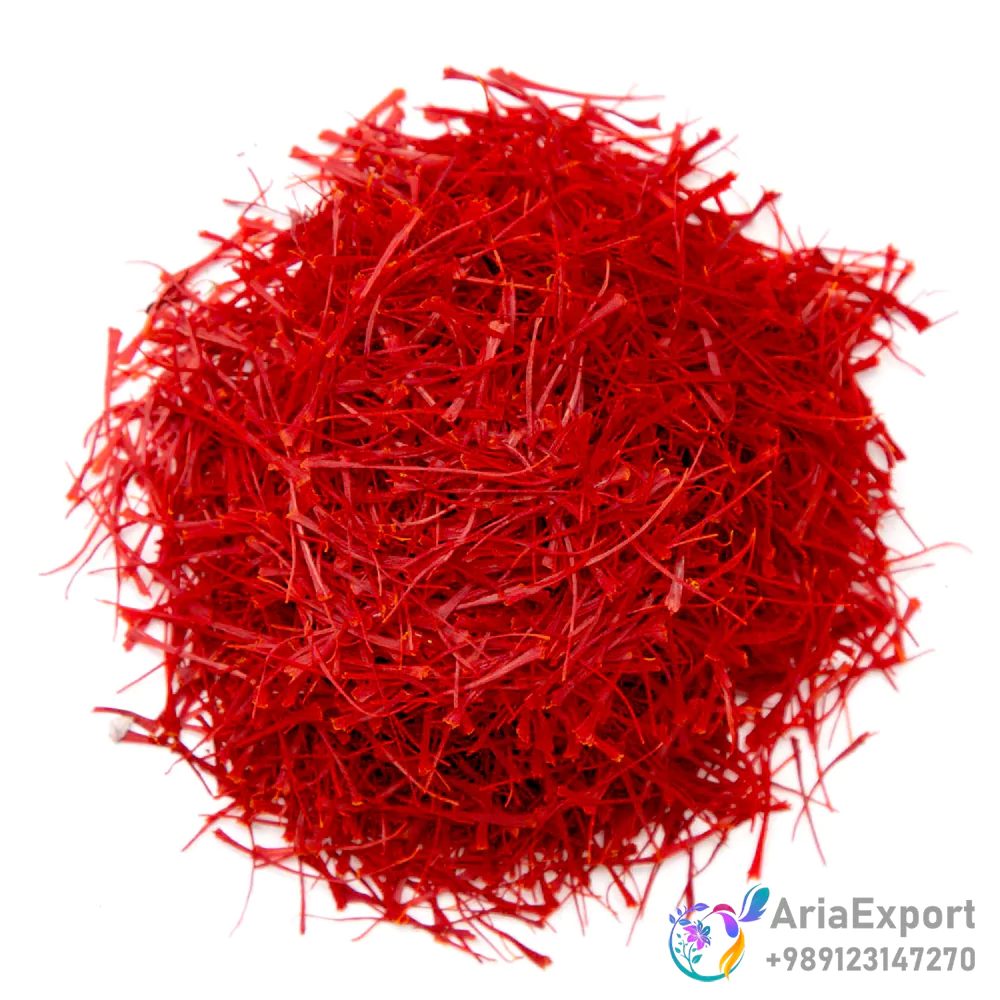
It’s interesting to know about saffron and its various types in Iran, where only one type of saffron flower is cultivated. Differences in the drying and cleaning processes have resulted in seven different types of saffron in Iran. The primary criterion for classifying saffron is the appearance of its strands. These types are:
Dasteh (Dokhtar pich) Saffron Pushal Saffron, Sargol Saffron, Negin Saffron, Shebhe Negin Saffron, Super Negin Saffron, Press Saffron, and Rishe Saffron.
The most important characteristic of Negin saffron, which has also made it highly renowned, is its unique appearance and aroma. The best way to identify Negin saffron is through its appearance and color.
How to Distinguish Between Negin Saffron and Sargol Saffron?
Both Negin saffron and Sargol saffron are considered high quality types of saffron. To differentiate between them, you should pay attention to their appearance.
The main difference lies in whether the saffron stigmas are connected or not. In Sargol saffron, the stigmas are usually connected, and in some cases, the process of separating the stigmas from the yellow part of the saffron strand causes them to break. However, Negin saffron has a different appearance.
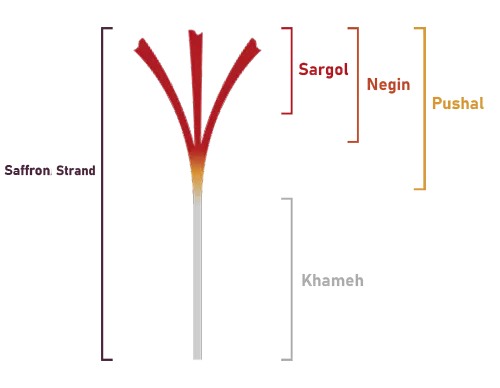
The stigmas of Negin saffron are completely smooth and show no signs of breakage. As a result, Negin saffron’s better appearance and stronger aroma compared to Sargol saffron make it relatively more expensive. The smooth and beautiful appearance of Negin saffron has earned it the title of the most beautiful saffron.
| Feature | Negin Saffron | Sargol Saffron |
| Appearance | Smooth, no breakage, beautiful | Stigmas often connected, may have breakage |
| Stigma Connection | Stigmas are separate | Stigmas are usually connected |
| Aroma | Stronger | Less strong than Negin |
| Price | Higher due to better appearance and aroma | Lower compared to Negin |
| Title | Known as the most beautiful saffron | No specific title |
Coloring Strength of Negin Saffron
The coloring strength of Negin saffron ranges between 230 and 270 units.
Types of Negin Saffron
Negin saffron is categorized into three main types:
- Regular Negin Saffron
- Super Negin Saffron
- Pressed Negin Saffron
The classification is based on its appearance. Super Negin Saffron has thicker and larger strands compared to Regular Negin Saffron.
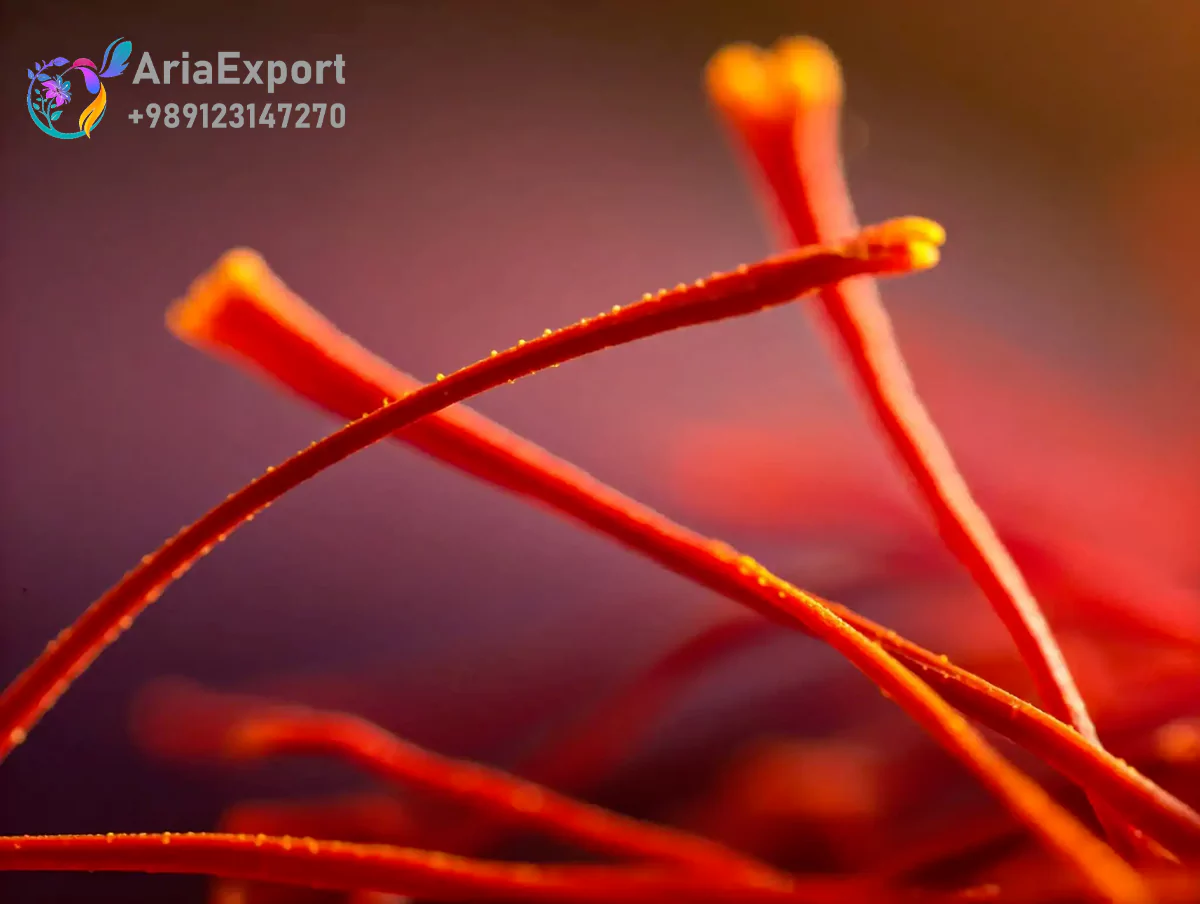
The differences between the types of Negin saffron can be briefly summarized in the table below:
| Feature | Regular Negin Saffron | Super Negin Saffron | Pressed Negin Saffron |
| Cleaning Process | Less precise, may include some yellow parts | More precise, no yellow parts | Pressed during preparation |
| Appearance | Between Pushal and Negin, less refined | Beautiful, thicker strands | Flat and smooth strands due to pressing |
| Price | Less expensive | More expensive | Price varies, rare type |
| Availability | Common | Common | Rare, hard to find |
Negin Saffron Benefits
The Healthline website lists the benefits of Negin saffron as follows:
1. Strong antioxidant properties
Negin saffron contains plant compounds like crocin, crocetin, and safranal, which act as antioxidants, protecting cells from free radical damage and oxidative stress.
2. Improves mood and reduces depression symptoms
Negin saffron can help improve mild to moderate depression symptoms and support emotional balance.
3. Reduces PMS symptoms
Negin saffron may relieve physical and mental symptoms of premenstrual syndrome (PMS), such as mood swings and physical discomfort.
4. Supports heart health
The antioxidant and anti inflammatory properties of Negin saffron may lower bad cholesterol and improve heart health.
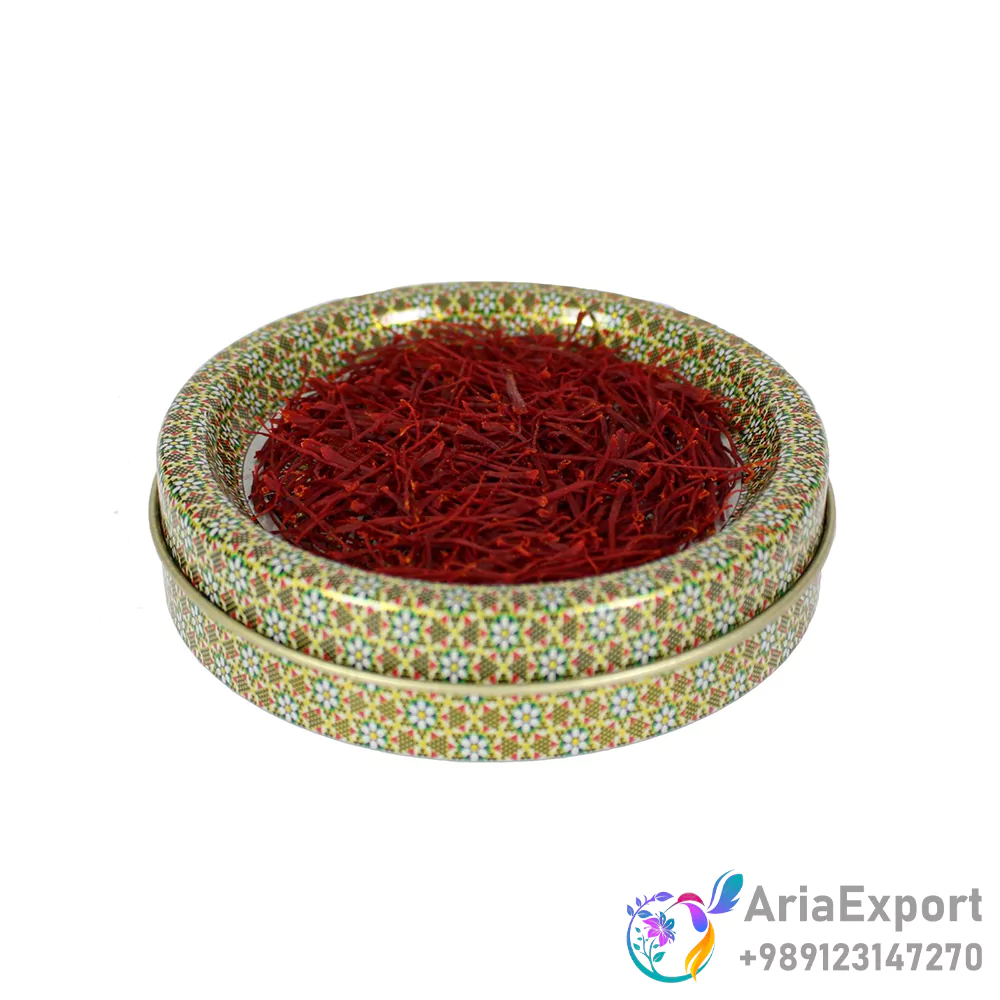
5. Improves memory in Alzheimer’s patients
Due to its antioxidant properties, Negin saffron may enhance cognitive function in adults with Alzheimer’s disease.
6. Potential anti cancer properties
Negin saffron compounds may target cancer cells or slow tumor growth, though more research is needed.
7. Improves sleep quality
Negin saffron may enhance sleep duration and quality, possibly by increasing melatonin levels.
8. Supports eye health
Negin saffron may reduce eye pressure and improve symptoms of eye conditions like glaucoma or macular degeneration.
Appearance and Characteristics of Negin Saffron
The appearance characteristics of Negin saffron are as follows:
- One of the most important features of Negin saffron is its color. The strands are red, with a completely uniform and beautiful hue.
- The stigmas of Negin saffron are fully separated and appear as individual strands.
- Another prominent characteristic is the thickness of its strands.
- The preparation and drying process for this type of saffron is unique, resulting in longer stigmas compared to other saffron types, with no breakage.
- Its exceptionally strong aroma is another superior quality of this saffron.
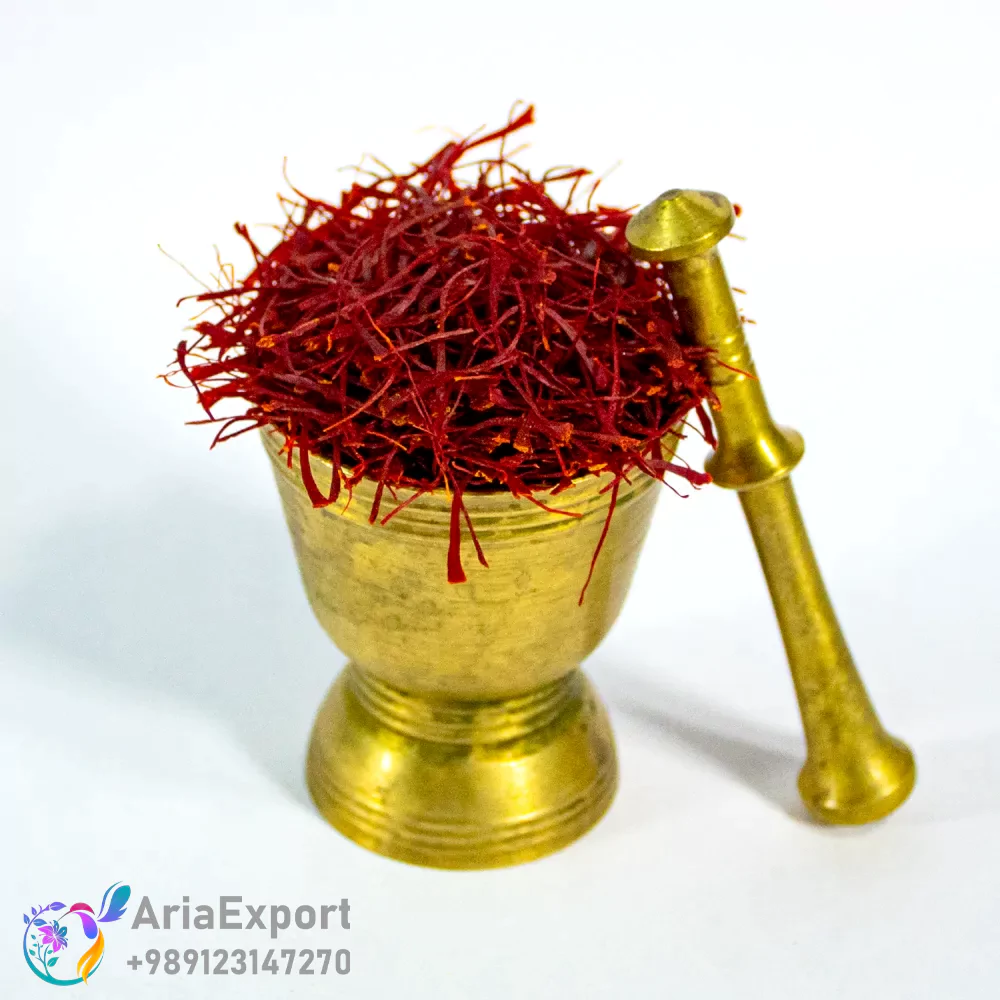
Negin Saffron Applications
Saffron is widely used in cooking, and its health benefits make it popular in traditional medicine. The exceptional qualities of Negin saffron make it more versatile than other saffron types:
- Its strong color and aroma make it a great spice, giving food a unique flavor and fragrance.
- Besides its taste and smell, the bright red color of Negin saffron makes it a natural food coloring, increasing its use in cooking.
- Negin saffron adds a wonderful taste to syrups, making saffron syrup ideal for hot summer days. You can use it in drinks without limits, not just in syrups but also in tea.
- It is also used to make various sweets and pastries.
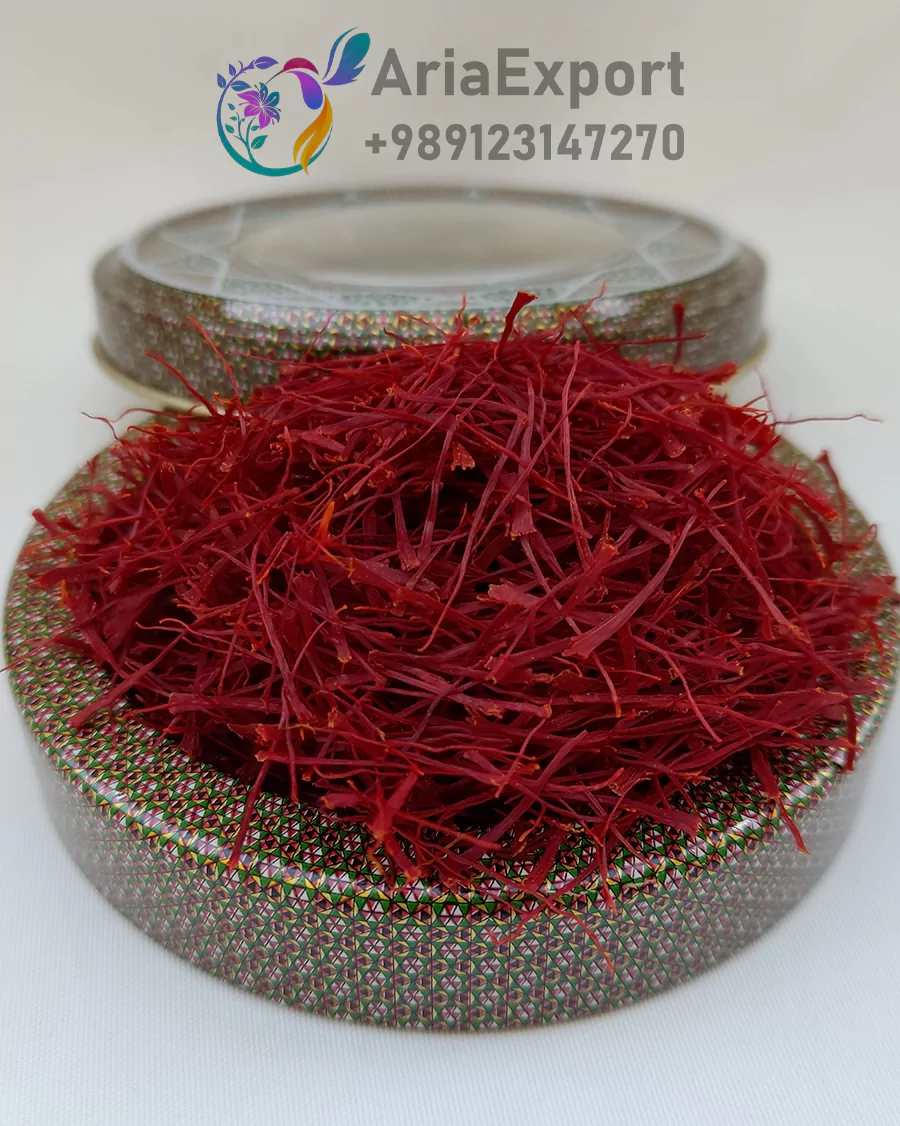
How is Negin Saffron Produced?
To produce Negin saffron, farmers must harvest the saffron flowers from the fields before sunrise and transfer them to another location. There, the process of fully separating the saffron strands takes place.
This process has specific requirements and must be carried out by skilled professionals. These experts carefully separate the three stigmas simultaneously. After this stage is complete, the saffron is dried and prepared for packaging.
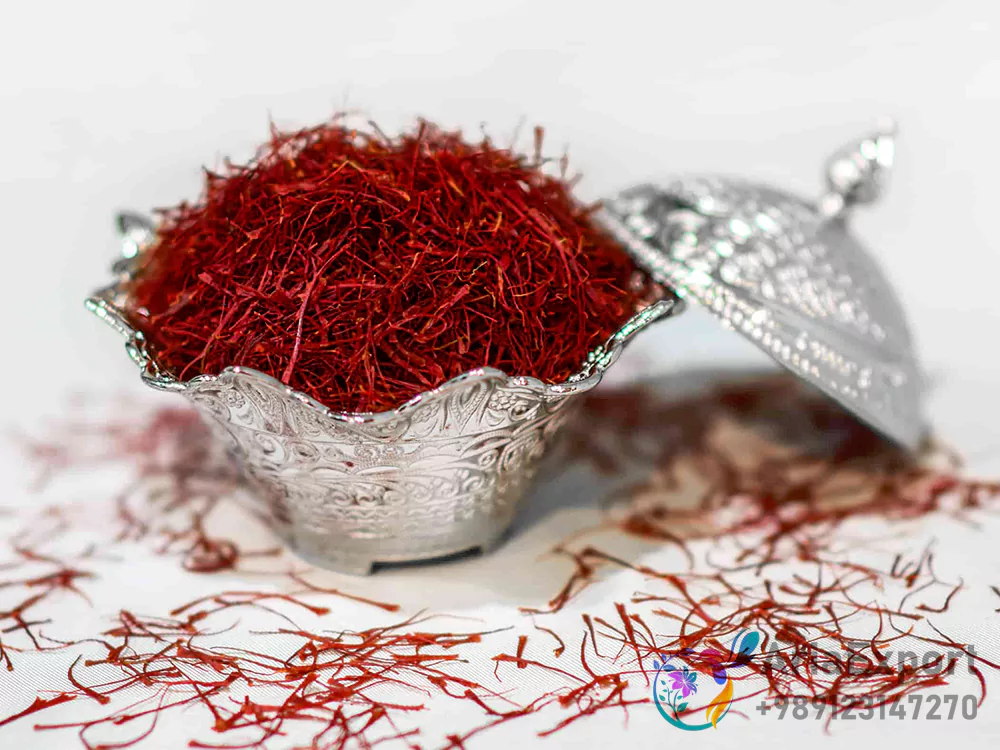
Where to Buy Negin Saffron?
AriaExport Company is one of the exporters of Negin saffron from Iran, delivering this product at wholesale prices to customers worldwide. The products supplied and offered by AriaExport are of the highest quality, ensuring maximum customer satisfaction. If you intend to make a purchase, you can visit the "Buy Negin Saffron" or "Buy Super Negin Saffron" page or contact us directly!
FAQ
What is Negin Saffron?
Negin saffron is a high quality type of Iranian saffron known for its beautiful look, bright red color, and strong aroma. Its strands are smooth, unbroken, and fully separated.
How is Negin Saffron different from Sargol Saffron?
Negin saffron has smooth, separate strands with a stronger aroma and no breakage. Sargol saffron usually has connected strands that may break during processing. Negin is more expensive due to its better look and scent.
What are the types of Negin Saffron?
Negin saffron comes in three main types: Regular Negin (standard), Super Negin (thicker strands), and Pressed Negin (rare, flat due to pressing).
What is Negin Saffron used for?
Negin saffron is used in cooking for its strong color and aroma, as a natural food coloring, and in drinks like syrups or tea. It’s also used in sweets and traditional medicine.
